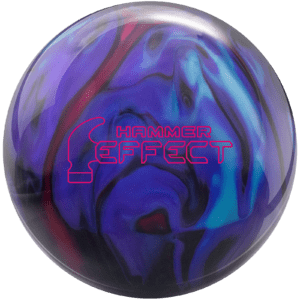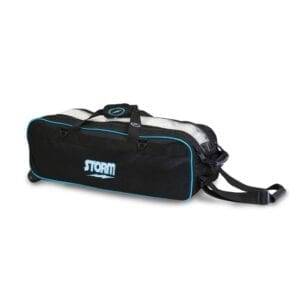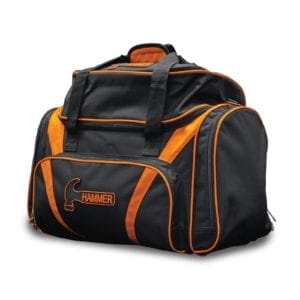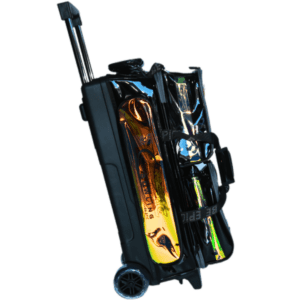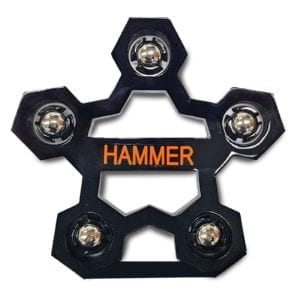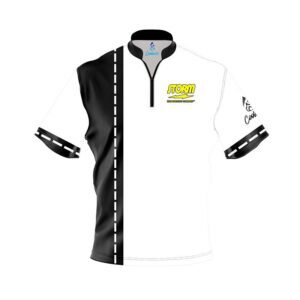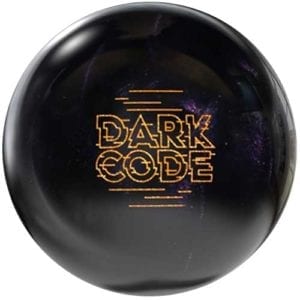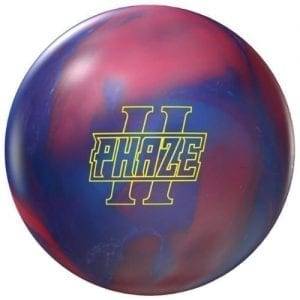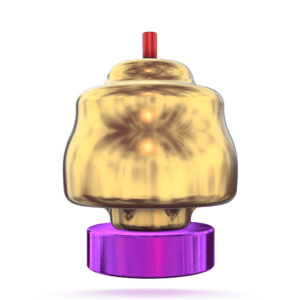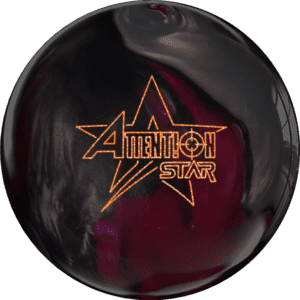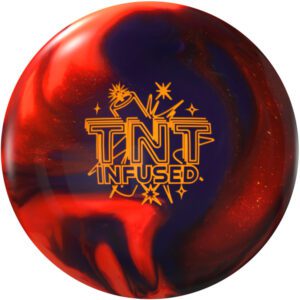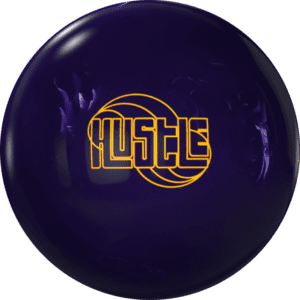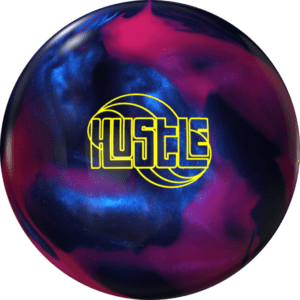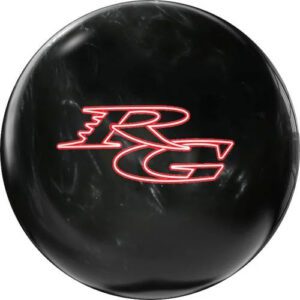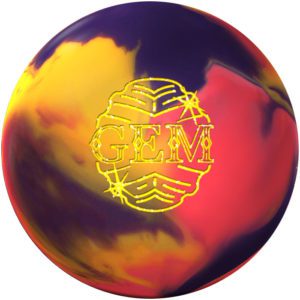Bowling How To's & Buyers Guides, Bowling Tips & Coaching Articles, Intermediate Level Bowling Tips, Lane Play & Lane Patterns, Luke Rosdahl Bowling Ball Reviews, Luke Rosdahl The Classroom
Luke Rosdahl Shows How to Increase Your Carry Percentage & Get More Strikes When Bowling
This is a video about controlling shot shape, recognizing errors, and creating good ball reaction and good matchups to help you increase your carry percentage when you hit the pocket
Knocking All 10 Pins Down to Strike Does Not Have to Look Great to be Effective
Hey and thanks for joining me for another video, this will be slightly controversial depending on who you are, who you talk to, what your personal ideals are, and kind of what skill level you’re at. Throughout the video I’m going to feature both Angel and I showing you both poor carry and then great carry with a handful of different balls to show you that you have a vast amount of control over your pin carry. Great carry doesn’t necessarily have to be impressive carry, if the pins are at least going down no matter how sloppy it looks, that’s a good sign. May not be a great sign and you may need to further adjust to tighten it up a little, but especially on weaker looking hits, if they’re going down instead of still standing up, that means you’re doing a lot of things right. This was something I mentioned and talked a bit to Tish Johnson about in my latest 30 Clean episode, be sure to check that out, we had a great conversation, and it’s the old school ability to just get the pins down. I hear way too many people say they got tapped all night or carry sucked and will whine about it, then on the other side, some people will be happy with their shot-making despite the bad carry and ramble on about some trusting the process nonsense. You do have to trust the process, you just have to make sure it’s the right process. Most of the time though the “trust the process” people are the ones that think that bowling is 100% about drills and execution and that when they’re good enough, the pins will respect their skill and just fall down. That’s not how it works, if you go back and watch some of the old PBA shows way back when where they’re throwing urethane or plastic and the pins are kind of splashing everywhere, it looks awful, but the pins are still falling down. That’s because despite not having big rev rates, reactive balls, or perfect form by a long shot, they knew how to just flat BOWL.
Listen to What The Pins Standing Are Trying to Tell You
People will say you can’t practice carry, and I think that’s absolutely false. All taps are not screw jobs and all breaks are not pure luck. Kicking corners, tripping 4s or 6s depending on what side of the lane you’re on, or getting messengers are the direct result of being in the right place with the right ball throwing it the right way. Randy Pedersen has said on PBA shows for a long time that a stone 8 for righties, stone 9 for lefties is the only true tap in bowling, the rest are the result of an error, mistake, or transition somewhere. Even then, I’ve still left stone back row leaves that were 100% my fault, and I’m dropping a few in here. You see how straight and forward the ball path is on these 9s? Tugged it a bit and got up the back of it, and it held, but because of the combination of the miss, the ball went too straight through the pocket and deflected through it. Most people will watch that and tell me I got screwed, when I knew it was coming off my hand. Few things drive me crazier than people complaining about carry especially when I can see exactly why they’re not carrying. All pocket hits are not created equal and just hitting the pocket ensures nothing more than at least leaving an easy makeable spare the vast majority of the time. If my carry sucks or if I’m getting tapped, that’s information that’s telling me that something about my ball reaction isn’t right or isn’t matching up. It might be a ball thing, and it might be a me thing, but generally speaking, having a softer hand, no matter what your rev rate is and keeping a rounder ball shape will transfer the maximum amount of energy into the pins.
To Carry & Strike More You Just Have to Know How to Bowl
Tish mentioned a couple different players with bigger rev rates that also have great touch and super soft hands at the bottom. EJ Tackett is a great example of someone with a huge rev rate, but that has a super soft hand, and gets his thumb out of the ball as quick as he can. There’s no grabbing, there’s no forcing, it’s all the flick of the wrist and the yoyo type motion. Now on the other side of the spectrum, there’s her, Norm Duke, and someone like Danielle McEwan that are really soft and nice to the ball at the bottom but are still able to still throw the pins around. Norm is kind of the master of that light mixer shot and actually kicks a lot of 10s out, and is probably the best example of the concept. As the game has progressively gotten higher and higher rev, he’s still able to compete with the kids, and even at his age winning back to back titles last year against Belmo and Simo in the title matches. If power was all that mattered and you couldn’t carry without it, there’s zero way he could compete, but he can, and specifically because he just knows how to bowl period. Beyond that, what’s really funny is that most of the complaints I hear about carry come from higher rev bowlers who seem to think that if they hit the headpin, they should strike, and this drives the point even further home.
Matching Up Is a Skill & Needed To Maximize Striking Potential
No matter what your speed or rev rate though, everyone talks about matching up, and matching up isn’t something you stumble upon, it’s a skill you develop, and the ones that are better at matching up will naturally carry better, but beyond and inside that, there are physical and mechanical adjustments you make to further improve or tweak your ball reaction and shape through the pins. You use ball selection in combination with your natural game to get going in the right direction, then adjust from there. Most people just kind of line up where whatever ball they decided to pull out strikes from the most of the time and they just camp and hang out there and just kind of plug away. Their night, unbeknownst to them, depends really on who they’re bowling or crossing with, and they just chalk it up to a good or a bad night, not having any idea what they could have done or that they could have improved it significantly.
Having a Clean Bowling Release Is The Biggest Key in Striking
Ok, so now that I’ve blathered on for 5 solid minutes, how do we actually go about doing this? Number one, whatever your rev rate, getting a clean release is the biggest key. It’s like they say in golf, you transfer the most amount of energy to the ball by staying loose and having soft hands, as soon as you muscle something or tighten up, all that does is make the club rigid and absorb a lot of the energy that you’re trying to transfer to the ball. It’s the exact same in bowling, if you try to muscle the ball it’s just going to kind of labor and flop or struggle down the lane just to hit flat. Being softer with your hand is going to get the ball easily and smoothly onto the lane, and instead of struggling and burning up energy early, it’s going to float down the lane storing more of that energy for a backend move and hit at the pins.
Having The Right Shape to Your Shots Entering the Pocket
Number two, there’s a time and place for more specific shot shapes or reactions when hitting the pocket is the priority, but at league on a house shot, a rounder and more continuous shape is generally best for pin carry. Sharper shapes look cool, but tend to cut through the pocket too firmly. The most confused people are the ones that try to generate the strongest backend move generally, because they think the stronger the backend, the more hit you’re transferring to the pins which is absolutely not the case. Go back and watch some old Earl Anthony videos, he was the king of splash and you could actually count his revs as the ball rolled down the lane, but he was better at it than anyone else.
There is No Magic Bowling Ball to Use To Throw More Strikes
There’s no magic ball, there’s no ball made that’s going to carry more than another, matter of fact the USBC has limits on coefficient of restitution which controls how springy a ball can be basically, or how much rebound potential it has. So thicker shells or Dynamicore or whatever still has limits, not to mention that you want to keep the pins low and going side to side, that’s going to increase the chance of them hitting other pins, which is what you want, not to shoot them up into the deck or out the back of the machine. Rounder reactions keep the pins lower, if you’ve heard that term, and it also keeps the ball from cutting or driving too sharply through the pins. Sharper reactions on the backend look great when you’re in the mixer zone, but a little late and you’re wrapping a corner, a little high and you’re leaving that 4-9, not tripping it, or driving by anything else on the back row. Rounder reactions will kick the corners and trip the 4s or 6s, and rounder reactions can be achieved with stronger or sharper balls.
Thanks for watching, hope you learned something here, keep practicing, and may the strikes be with you.
storm dark code bowling ball
The Dark Code features an extremely dense modified disc technology shape called the RAD4 Core. First introduced in the X-Factor™ series, RAD (Radial Accelerating Disc) technology produces, bar none, more torque and entry angle than traditional asymmetrical cores. It’s the new standard for high performance.
Some bowling balls immediately sink their teeth into the lane in order to provide traction in oil. Others glide through the front part of the lane with ease, saving all their energy for an explosive backend reaction. But, what happens when you have a ball that’s capable of offering both? Well, at Storm, we wanted to find out, and that’s how we came up with the Dark Code – a ball that’s so good, it’s almost evil!
The engineering may be complicated, but the simple truth of the Dark Code is as confidence inspiring as anything else we’ve built to date. Dynamic cores and potent covers build a solid foundation – one enhanced by industry-leading longevity. A superior factory finish signifies its place atop the pecking order. Imposing. Purposeful. This is the kind of ball you look up to.
We stepped back and took the best features of our seven most popular coverstocks: Reactor™, R2S™, TX-16™, NRG™, SPEC™, GI-20™, and NeX™. What’s realized has more texture, more porosity, and more motility that combines the benefits of seven of the most iconic coverstocks to ever leave the Storm workshop. TractionX7 headlines the durability of TX-16, the backend of R2S, and the slower oil absorption rates of SPEC. Simply put, there’s versatility encased in TractionX7’s genome that stays put for as long as it stays in your bag.
Coverstock – ReX Pearl Reactive
Weight Block – RAD4™ Core
Factory Finish – 1500-grit Polished
Ball Color – Obsidian
Fragrance – Cherry Delight
RG (15lb) – 2.50
Diff (15lb) – .058
Storm phaze 2 bowling ball
The new Phaze II features both innovative core and coverstock technology, proving again that Storm is the leader in bowling innovation. Advancements in the core shape are easily seen with the naked eye. This fast-revving shape, the aptly-named, supercharged Velocity? Core helps you crush pin after pin as it produces more ball motion than any other shape in our Master Line. It smooths out the backend reaction without over-reacting and avoids creating an undesirable last-second movement.
TX-16 (Traction-X 2016) is what emerges from countless hours in R&D to develop the finest coverstocks on the planet. This solid reactive blend leaves an incredible footprint on the lane. The marriage between the core and the cover produces the strongest motion of any symmetrical Storm ball to date.
– Color: Red/Blue/Purple
– Coverstock: TX-16? Solid
– Core: Velocity? Core
– Finish: 3000 Grit
– Lane Condition: Heavy Oil
– RG: 2.48 (15# ball)
– Diff: 0.051 (15# ball)
– Fragrance: Red Velvet Cake













